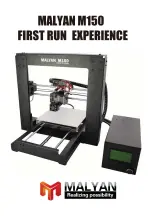
T480 Unicode and Fonts
T480
Programmer’s Guide
Page
196
Rev A
100-14362
Send the following text strings to the printer using whatever means is available to
you.
&%UBLogo& Begin defining macro "Logo"
&%UGLogo& End the Definition of "Logo"
&%UMLogo& Save Macro "Logo" to nonvolatile memory
A graphic image named “Logo” should now be stored in the nonvolatile memory.
To verify the image is present, use the “&%UQ&” IPCL command or the PJColor
Color Image Converter to print the name and size of the stored images.
Recall and print stored named graphic image
Send the following text string to the printer using whatever means is available to
you.
&%URLogo& Run Macro "Logo" (Print the macro)
Cautions
Universal graphics information is stored in the same place as user defined characters
and user defined macros. If you are using an emulation such as ESC/POS that supports
macros and/or user defined characters, universal graphics will compete for space with
these functions. In addition, the "&%UFALL&" (Erase universal graphics) will also erase
any user defined graphics and macros.
If you are using the Ithaca PcOS emulation, these commands are identical with the User
Store commands except for the terminator character. You may change the NUL
terminator to "&" with "&%UT&" if you find the "&" easier.
Universal Graphic Command Descriptions
&%UB <Name..>& Begin named universal graphic record
IPCL
&%UB <Name..>&
Description
The &%UB <Name..>& command initializes the universal graphic buffer
structure, and redirects the following data to the universal graphic buffer. It uses the
<Name..> field as a reference. If the name already exists in the flash user store, the
command is ignored. The command must be followed by the "End name universal
graphic record" command with the same name. If the data that follows is larger than the
universal graphic buffer (about 16K), the universal graphic definition is terminated
without saving any data.
&%UG <Name..>& End named universal graphic record
IPCL
&%UG <Name..>&
Description
The &%UG <Name..>& command ends the universal graphic record
operation and saves the universal graphic to flash. It uses the <Name..> field to verify
the command end and must match the "Begin named universal graphic record"
command. If the name already exists in the flash user store or the universal graphic
memory is exceeded, the command is invalid, and the <Name..> field prints.
&%UR <Name..>& Run universal graphic data from user store
IPCL
&%UR <Name..>&
Содержание Epic 3000
Страница 1: ...Epic 3000 Programmer s Guide PN 100 14362 Rev A Dec 2015...
Страница 2: ...Programming Codes Epic 3000 Programmer s Guide Page 2 Rev A 100 14362...
Страница 266: ......
















































